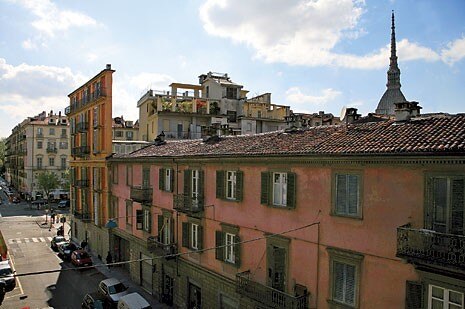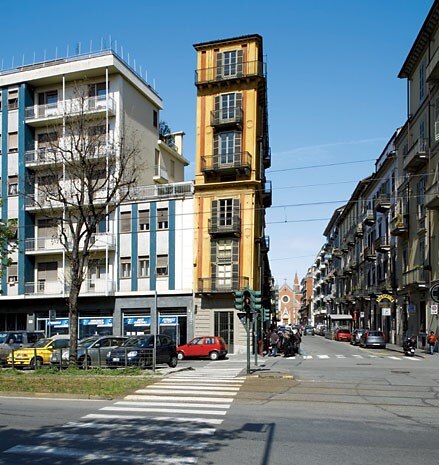In classical mnemonics, the points that composed
the orations corresponded to a series of loci, or places of
architectural equivalence. This principle enabled the orators
of antiquity to exercise their memory and to
make sure it would not fail them when it came
to delivering their articulate speeches in public.
With due differences, traces of this procedure
seem to crop up in the work of Simon Starling
and in the method governing his exhibition
“Three Birds, Seven Stories, Interpolations and
Bifurcations”. In response to Franco Noero’s
invitation to design the inaugural exhibition
for his new gallery, situated in the building by
Antonelli in Turin known as the Fetta di Polenta
(or “Slice of Polenta”), Starling came up with
a show based on the idea of an intimate correspondence
between architectural places and
memory. Modernism has always been Starling’s hunting
ground and the interweaving, unwritten stories that make up
its fabric are his tools. With a method that is also archaeological,
Starling digs into the obscurity of this recent past,
unearthing unsuspected connections that punctuated its
progress. The exhibition staged for the Antonelli building
thus links Turin, Indore and Berlin in a fresh short circuit
and reveals an unusual weft stretching between Italy, India
and Germany.
The carefully articulated project devised by Starling
begins in Turin. In this city the artist, helped by a touch
of British serendipity, came across a portrait of Maharaja
Yeshwant Rao Holkar Bahadur. Perhaps unknown to many this personage is for Starling on the other hand a prominent
one, whose ideas and actions filled a fascinating chapter
in that history of culture which he finds so absorbing. A
great-grandson of one of the governors who contributed
most to the modernisation of India, the prince was educated
in England. In 1929, in an urge to move forward, he commissioned
the German architect Eckart Muthesius to renovate
the work done by the British MacKenzie & Co
– who built the residence at Manik Bagh – and
to design its furniture. In the palace gardens
the prince had also intended to have a temple
built, in which three versions of Bird in Space,
the sculptures by Brancusi which he had bought
in Paris directly from the artist, would be
kept. The prince’s interest in Brancusi was also
shared by the German architect, who in some
of his designs for the furniture drew inspiration
from the Romanian sculptor’s highly polished
shapes. In addition to his work for the prince,
Muthesius’s Indian adventure continued with
a consultancy to the film director Fritz Lang,
who made two full-length films in India. Through a series of
twenty-one platinum prints, Starling conveys key images of
that little-known and perhaps never fully compiled history.
Also featured in the exhibition are three marble blocks of
the same quality, no longer available today, used at the time
by Brancusi for his celebrated works. Thanks to the artist
and to the eccentricity of Antonelli’s architecture, visitors
walking through, or rather up, the seven floors of the “Slice
of Polenta” can admire its complex circumvolutions. Within
these, each of the rooms containing the exhibition becomes
truly a place of memory and a catalyst capable of sparking a
fertile circuit of ideas, facts and dreams in which rationality
and folly continually exchange roles.
Simon Starling
In Turin, Starling and Noero stage a fresh short circuit of corre spondences betwen architectural places and memory. Text Marcella Beccaria. Photos Tommaso Buzzi.

View Article details
- 12 June 2008
- Turin
